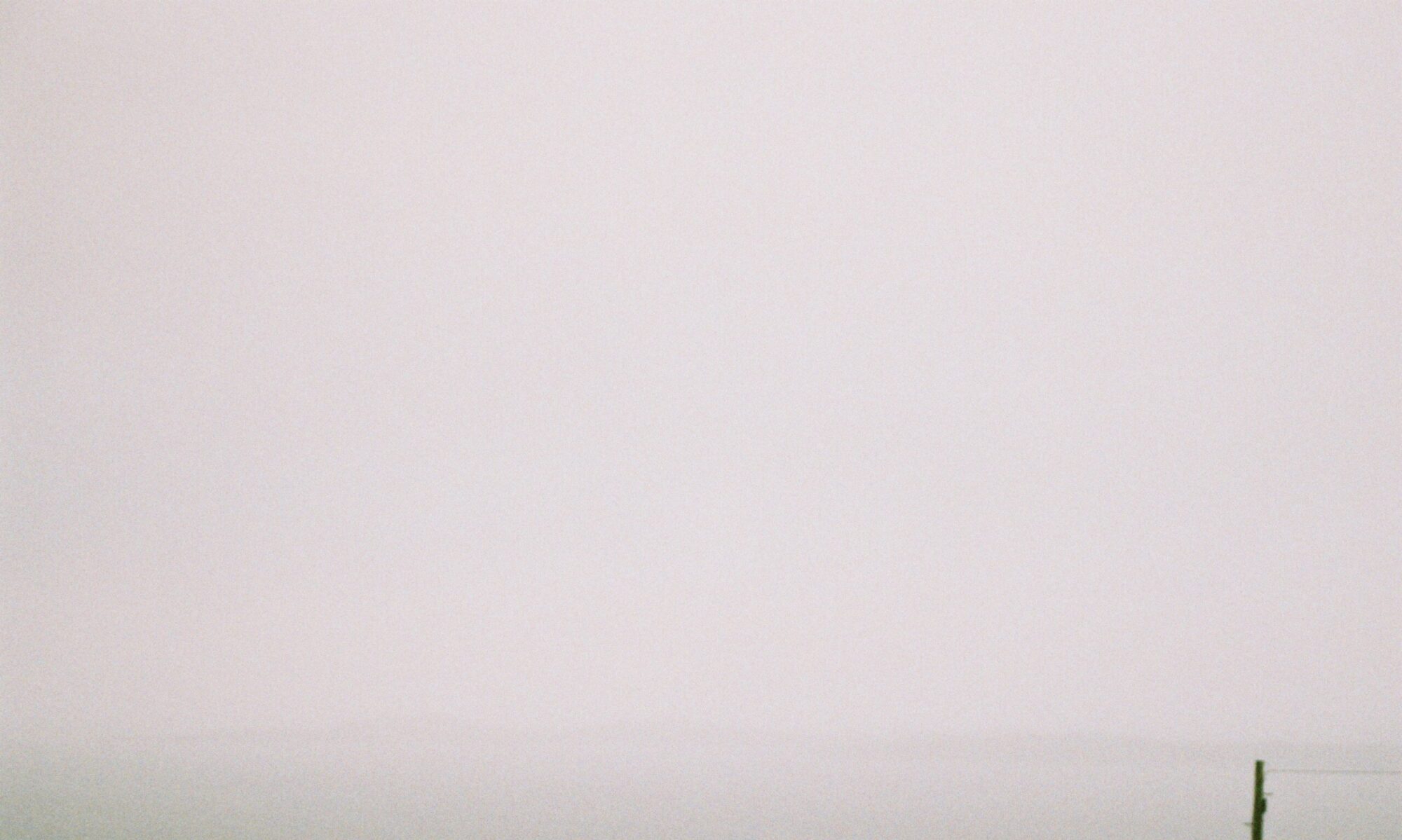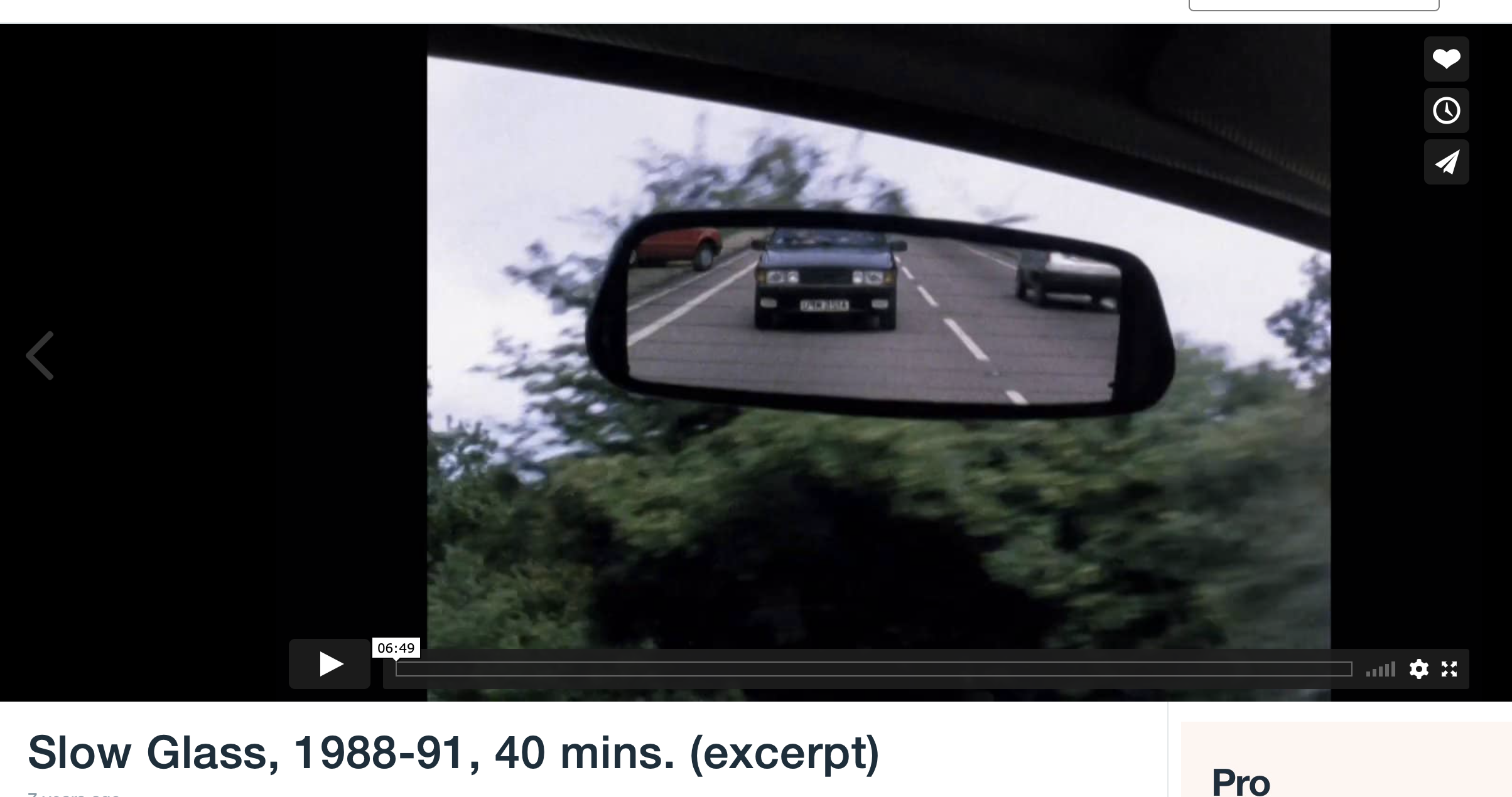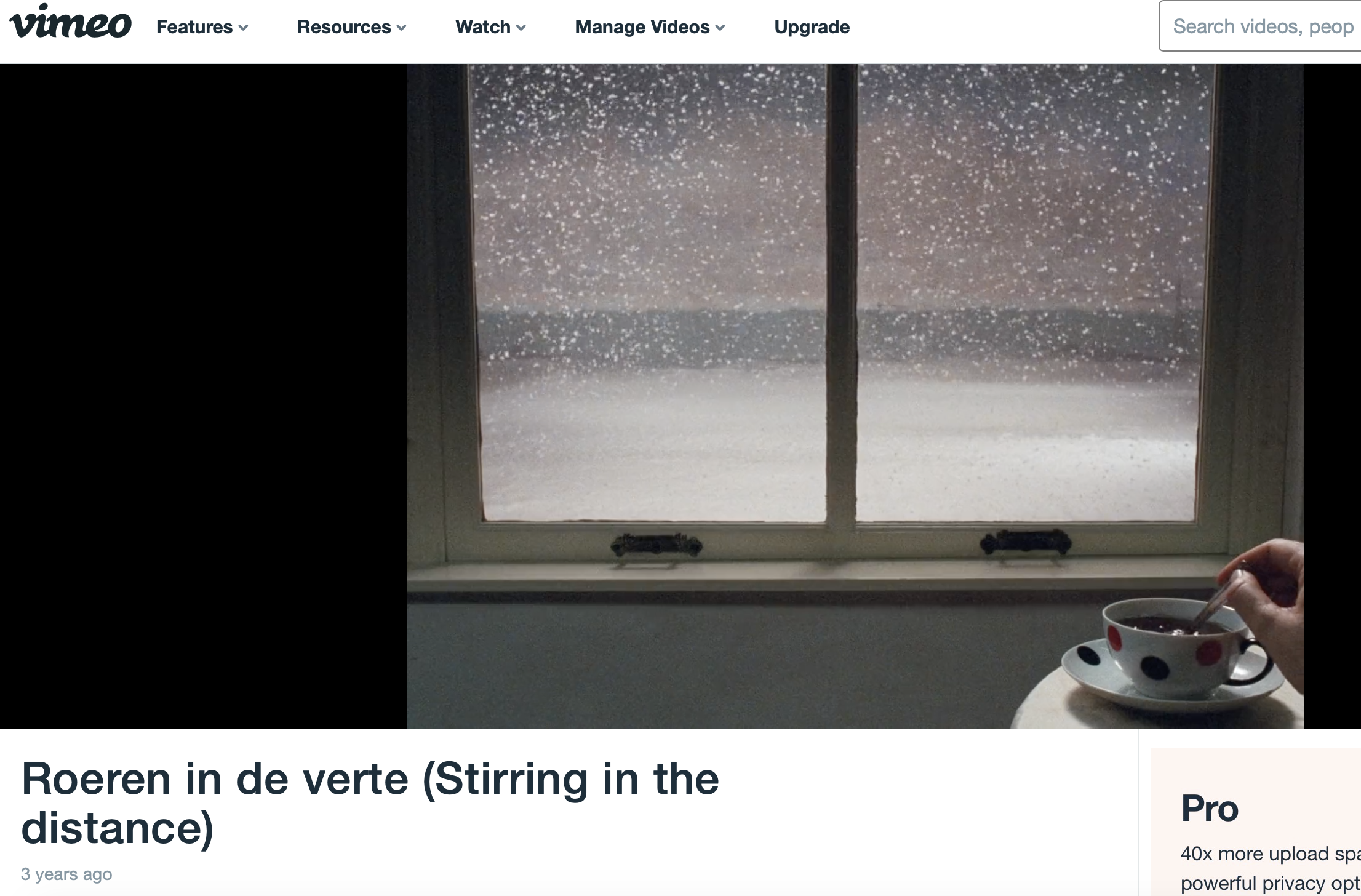My initial attraction to movement is shown within semester 1 still images. 35mm, Plants blowing in the wind, traffic passing and water, all elements shown within my films.
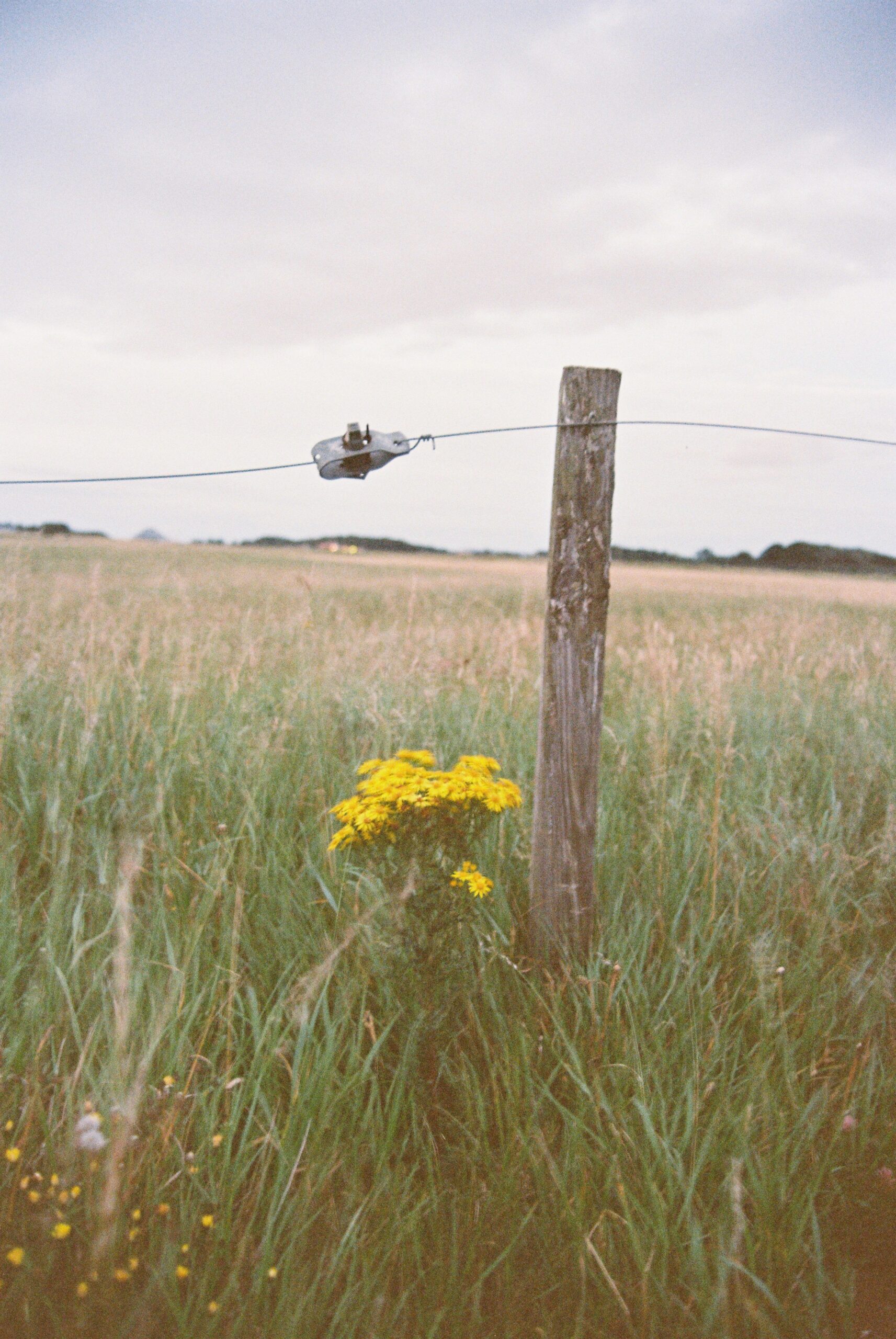

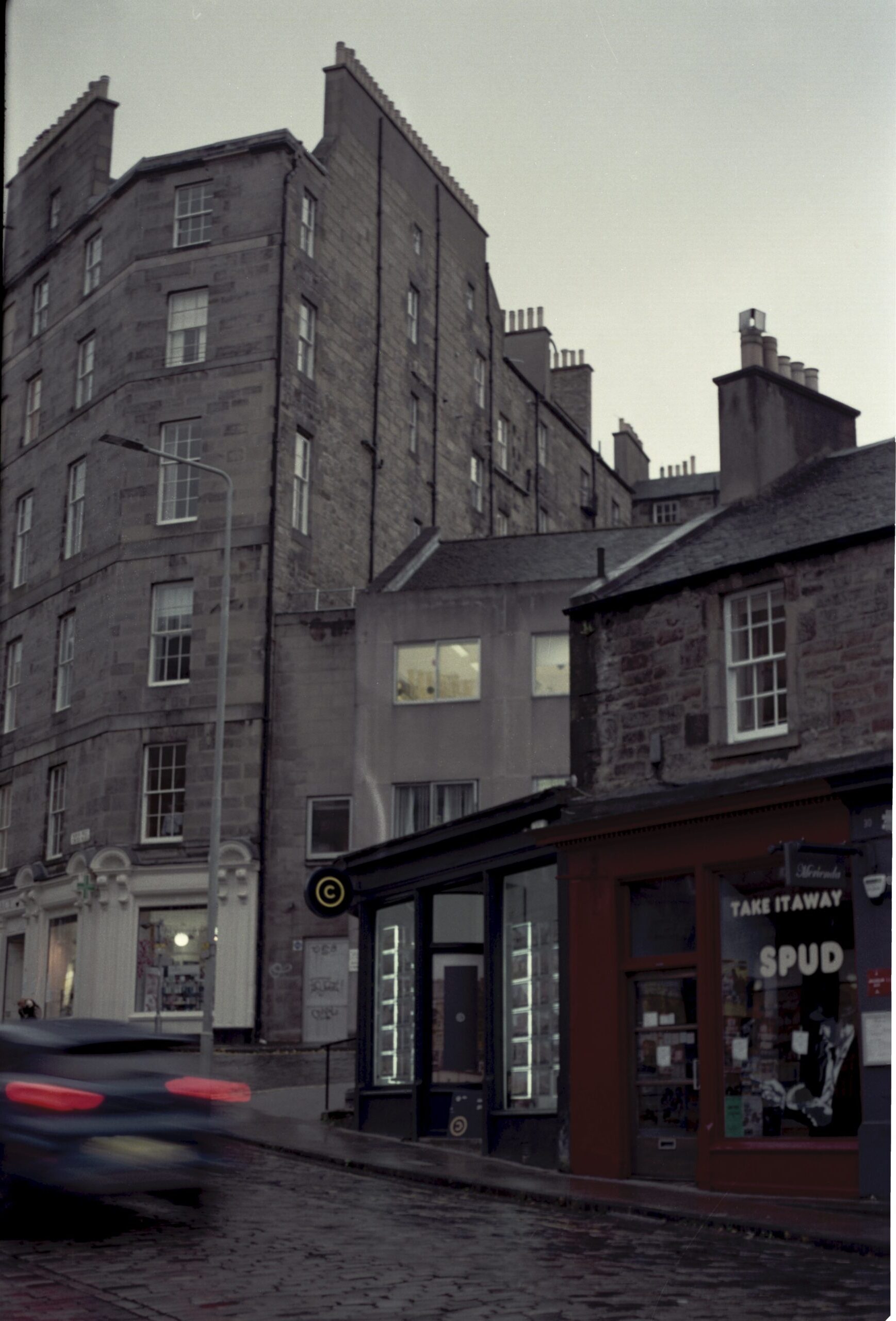
Due to my interest in movement, I had been in contact with LUX Scotland to view more short films until they went on furlough. This was key to my research, I would fill out a form every two weeks to therefore have access to a wide range of films. This way I was able to watch Margaret Tait, Moira Sweeney, Peter Todd and John Smith, filmmakers that have helped me develop my practice.
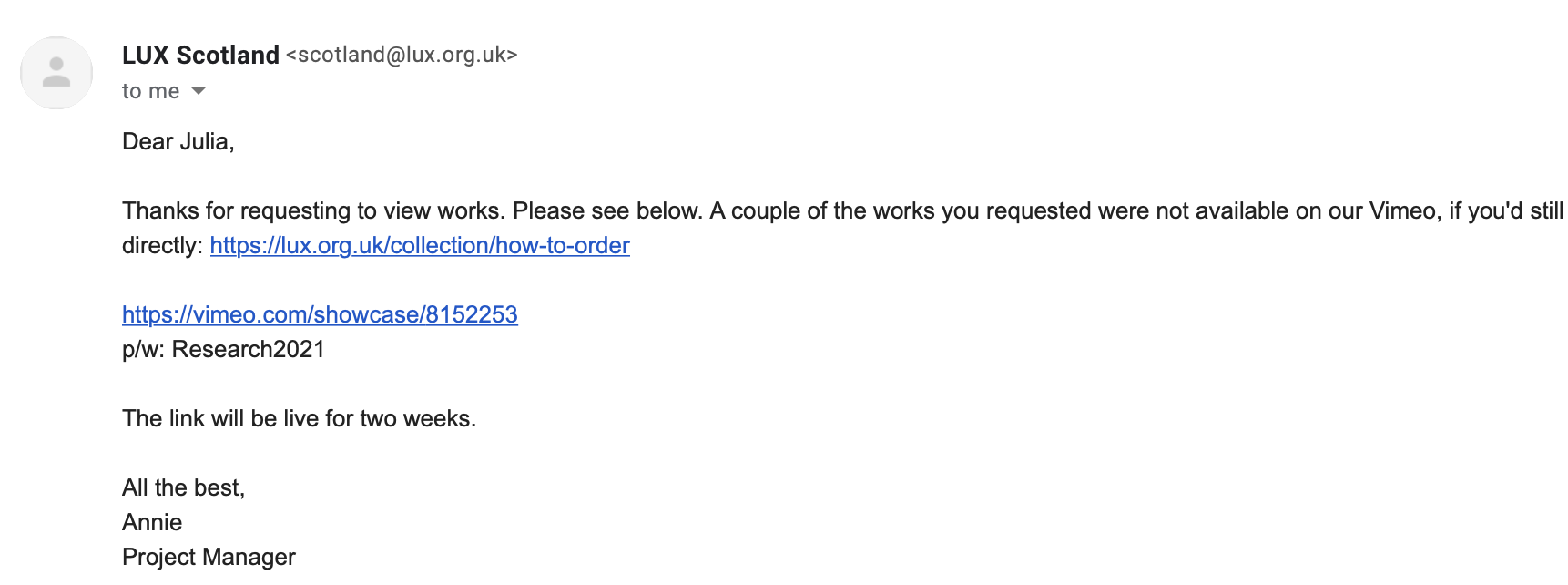
Starting point: The first final moving image piece made
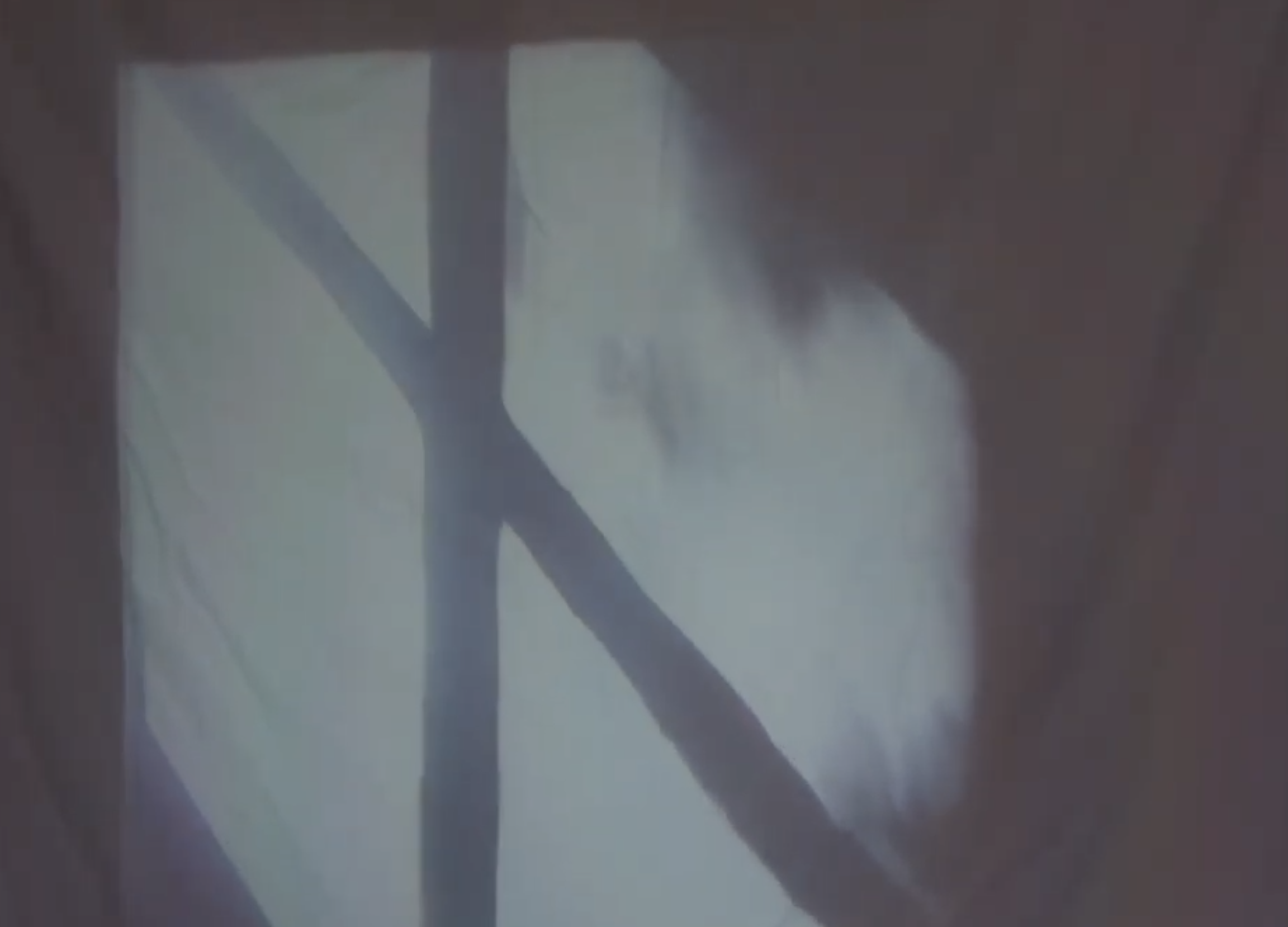
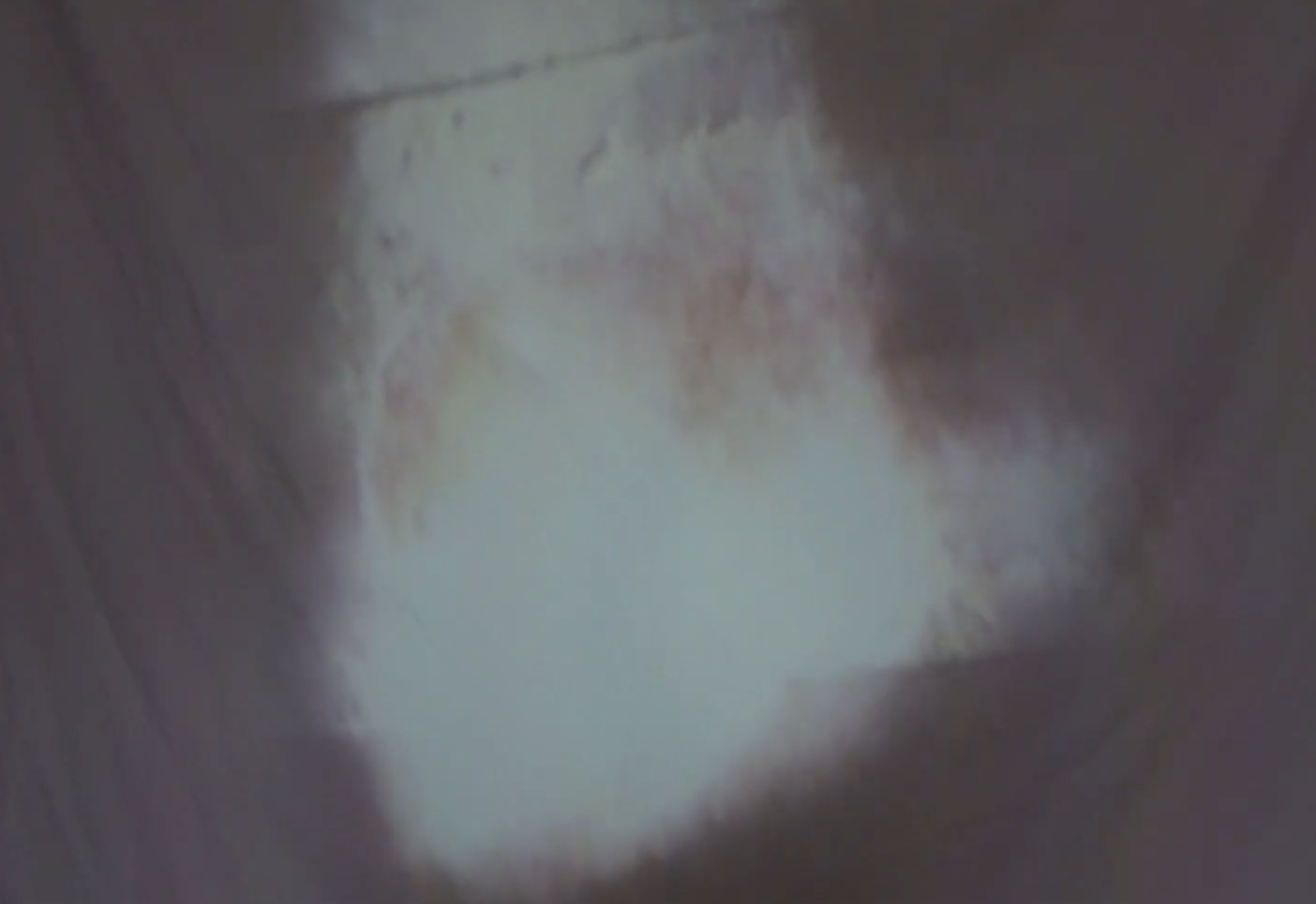 My work https://youtu.be/vUMxoHUDUO4‘Following the Light’ Shown projected on a sheet within my kitchen
My work https://youtu.be/vUMxoHUDUO4‘Following the Light’ Shown projected on a sheet within my kitchen
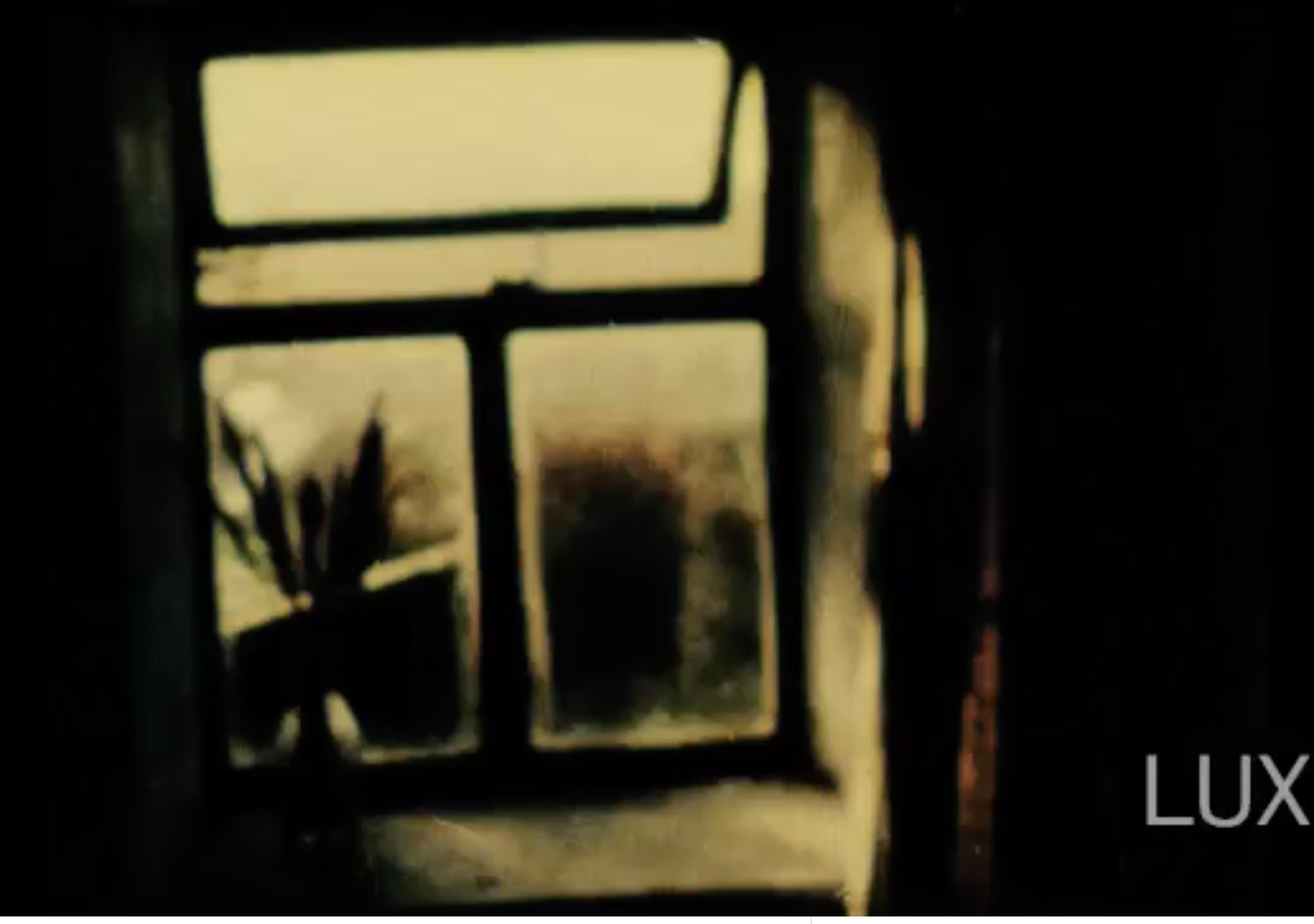
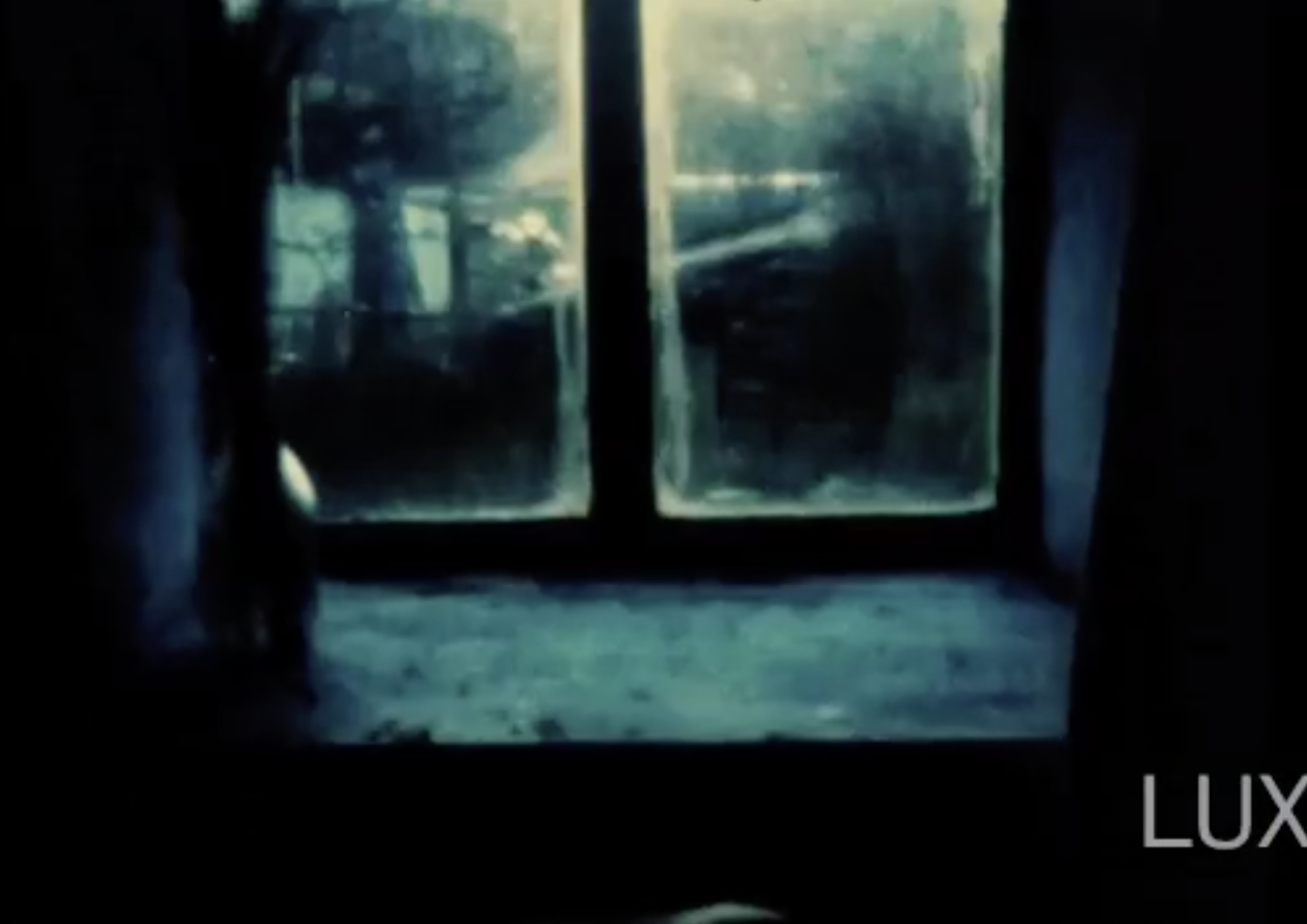 inspired by Moira Sweeney’s work
inspired by Moira Sweeney’s work
Moira Sweeney’s work Imaginary (1989) documenting light and windows, sped up which captured the fleeting nature of changing time shown with the movement of the sun dappling into a domestic space over a period of time sped up. Sweeney used the handheld technique of filming therefore having a shakey and jolting effect, which inspired me to do the same. This film had no audio which is something I hadn’t tested out at this point so kept my films silent. Inspired by Sweeney’s jittery movement, cuts and light attraction I made my film ‘Following the Light’ shown through projection onto a sheet in my kitchen for semester one.
I became interested in time,
Peter Todd’s work The Room a collaboration film in which a kitchen shelf is documented over time, showing human activity in the domestic space. In second year we were given a project called mapping time in which we had to photograph the same place at the same time consistently over the semester, the outcome would reveal a series of subtle changes that develop over time otherwise unnoticed, as seen in Todd’s work. This way of documenting time within moving image is also seen in Slow Glass (1988-91) 16mm, by John Smith. I became aware of the feeling of time passing slowly during covid as nothing would be happening to signal the passing of time how I was used to. Therefore becoming so aware of the slow passing of time I wanted to try out this literal way of documenting time to comfort myself during a difficult and frustrating time.
Smith documented in this way over a few years which showed renovated buildings, people passing and makes us think about fleeting time and change. In Todd’s film He documents his shelf in the kitchen over a period of time, we noticed pantry items getting used, things moved around we become interested and invested in one place in one home over time, time here is therefore shown in a physical sense.
I experimented with my window cill and documented it in this way. I became invested in the ideas of us changing our flowers and plants over time and how I felt almost connected to my neighbour this way. I got as far as replacing my flowers 3 times whilst my neighbour only once, during this period time I did not own a tripod and therefore the movement in the piece was distracting and was not as successful as Todd and Smiths work.
I decided against this way of documenting time as I am more taken by movement within moments. Here are some film stills from my experiment before I decided against this way of documenting time. linked here https://youtu.be/GBL9HPWrUIU


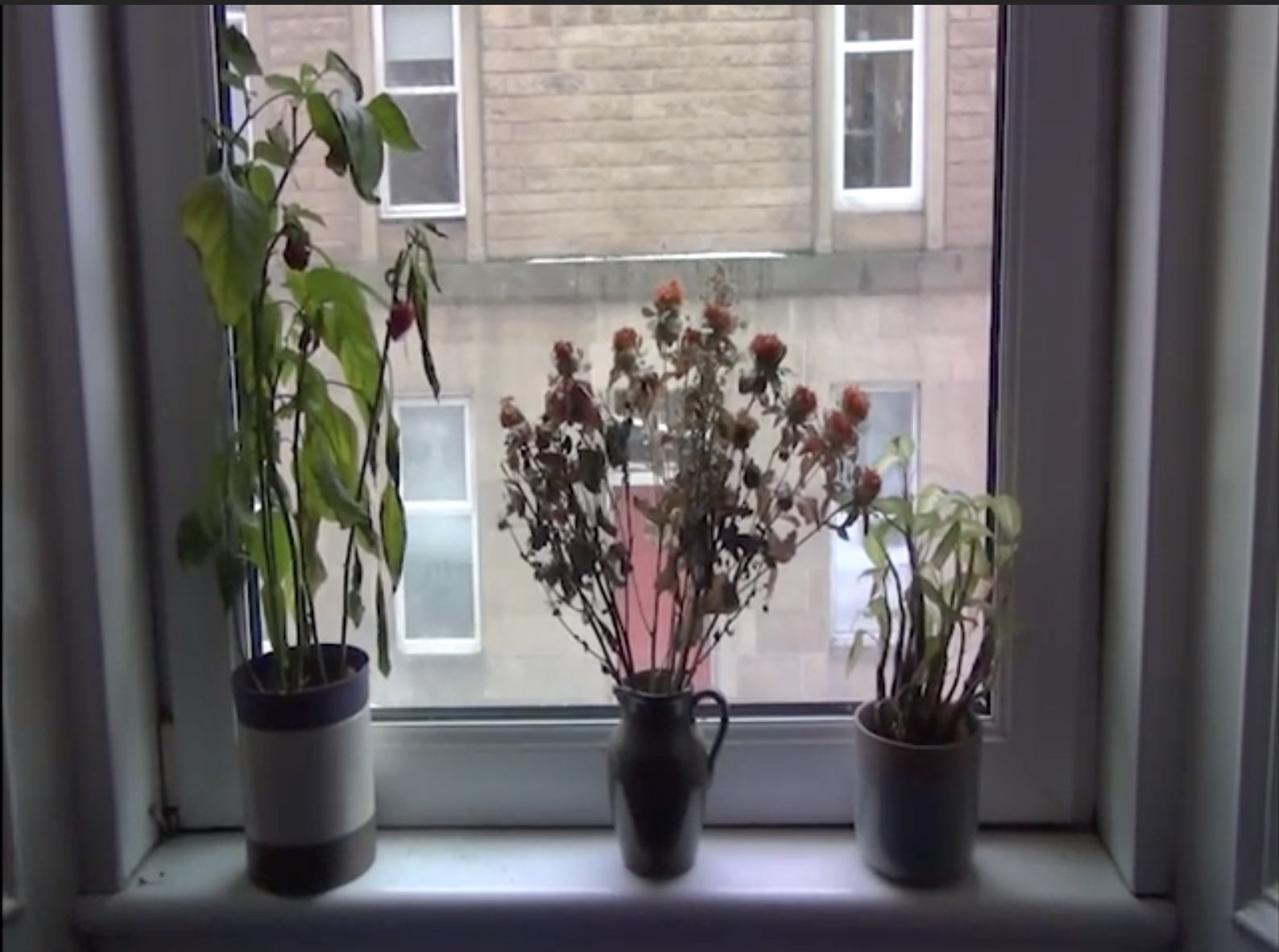
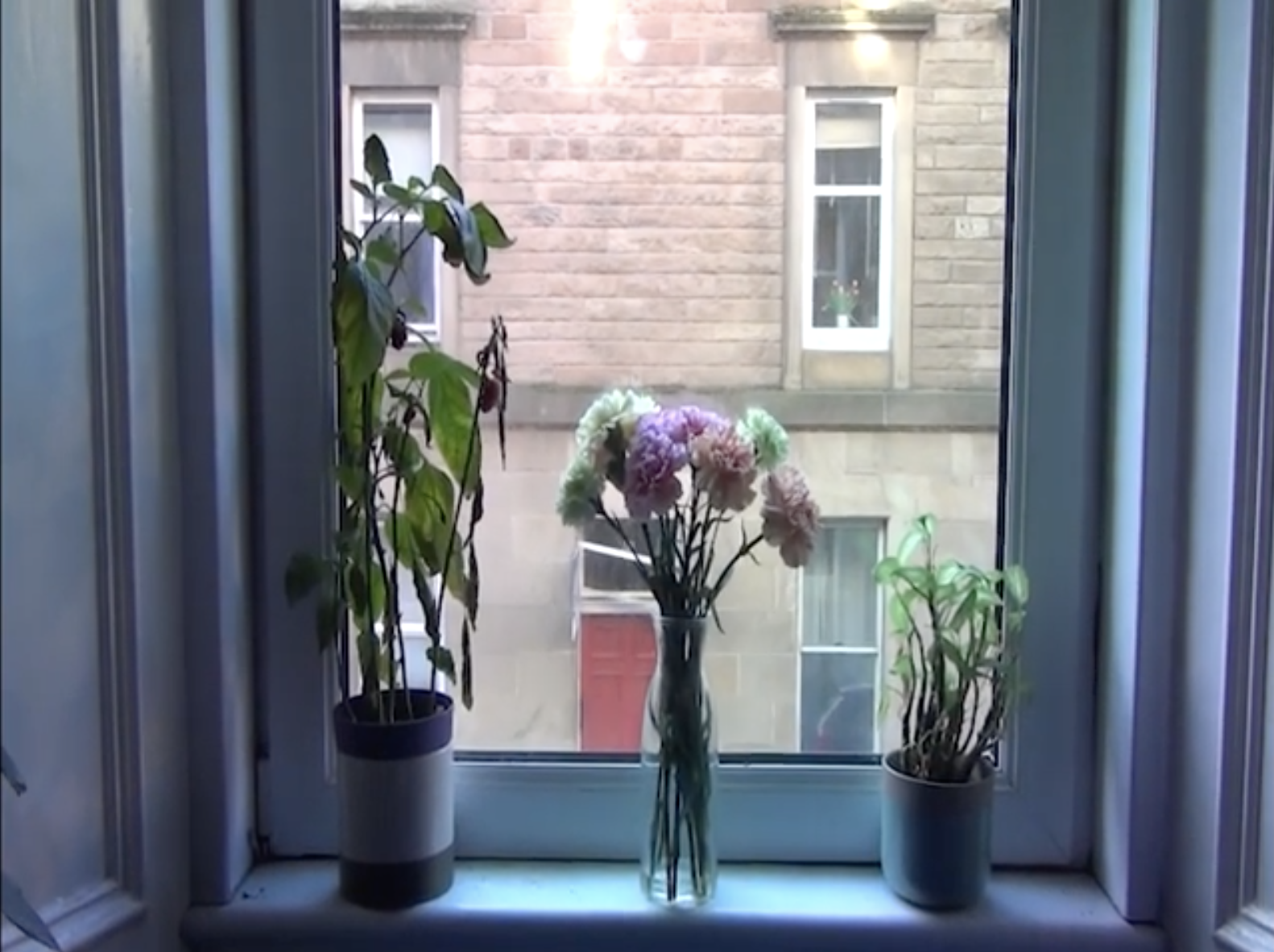
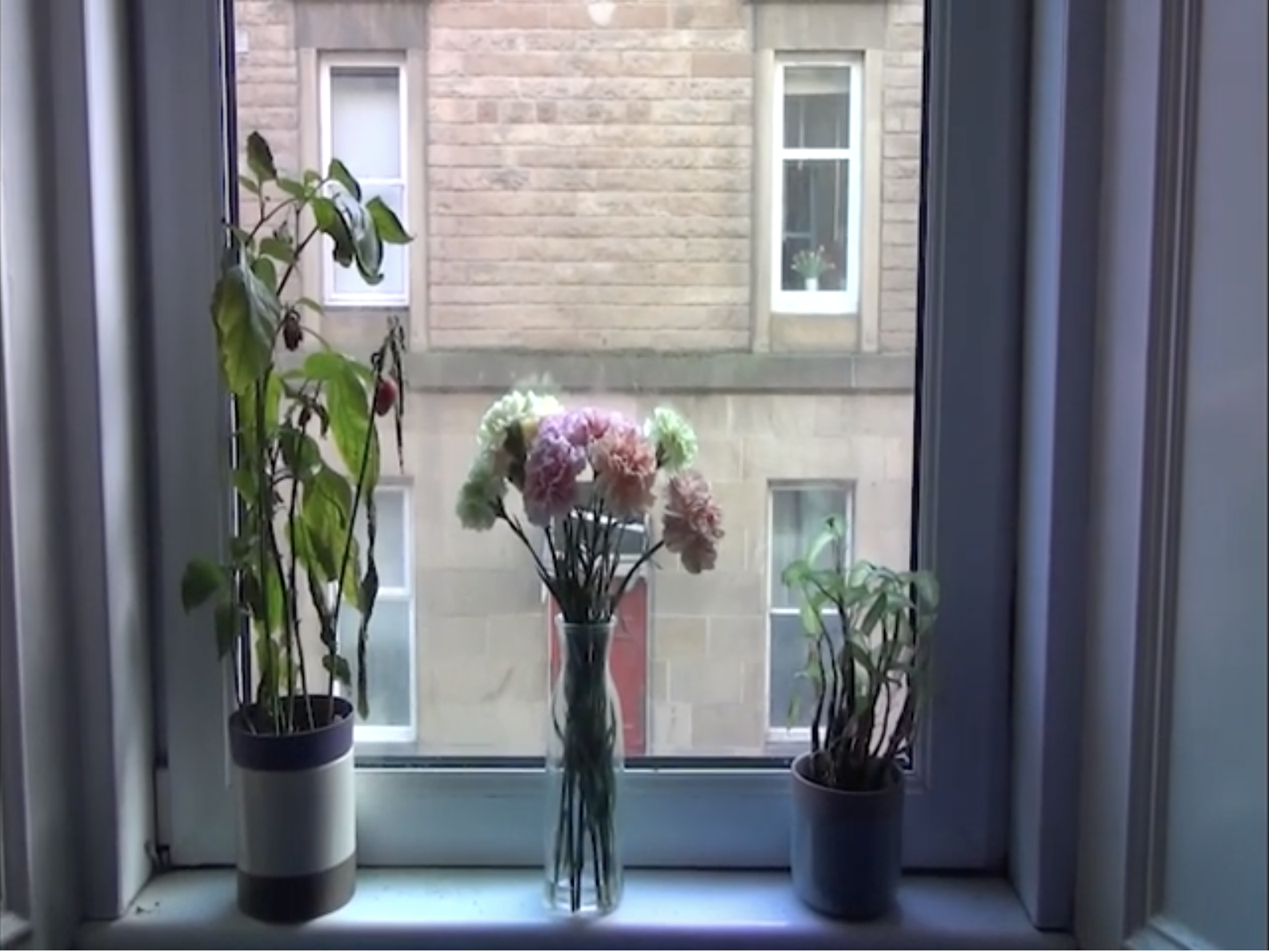
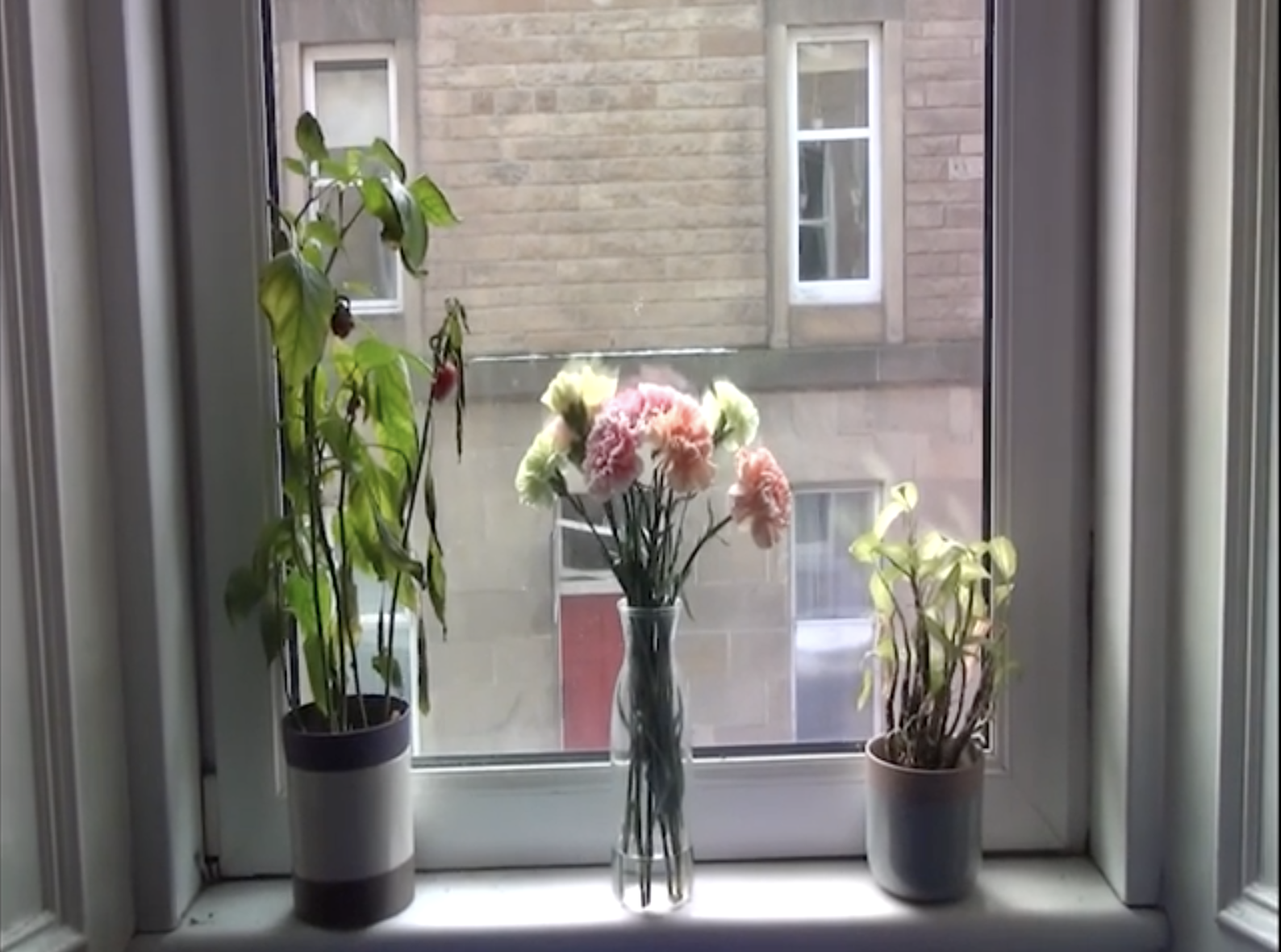
Marcel Proust’s ‘In Search of Lost Time’ was key to my research on this idea of time and the meaning of being present, how time can be felt not in the literal form but through emotion and meaning. Through the moment within the passage where he dips a piece of madeleine cake into a cup of tea, which reminds him of his childhood, memories realised by the taste and smells around him, and the joy he feels during this moment. Of forgetting our troubles and the passing of literal time, of forgetting the idea we are all going to die, and remembering how beautiful this time we have is on earth, and to be with this moment while we have it, to enjoy, to live, art reminds us how beautiful the world can be, appreciating the way a tree sits, the sounds of the birds, a frozen lake and dappled light. Being aware of time passing – but making this a positive.
“Time can be defeated. It can be defeated through the chance operation of involuntary memory, such as dipping a piece of madeleine cake into a cup of tea. It can also be defeated through art.” – Alexander, P., 2009. Marcel Proust’s Search for Lost Time: A Reader’s Guide to Remembrance of Things Past. Vintage.
Marijke van Warmerdam’s piece Stirring in the Distance, I decided after watching – my work would also be time focused in a similar sense, on these quiet moments, getting lost in thought and memory, a daydream, losing ourselves, losing track of time – content feelings, reassurance. (Linked)
The idea that time can escape us in moments when we aren’t aware of physical time passing. We are not socialised in cinema to watch moments like this. But through poetic cinema Images, sounds can transport you somewhere can trigger a memory, losing yourself within a moment.
I experimented with a twin screen in my film Adam. And perceive time in a different way, not in the literal but time passing us by and not being aware of it, losing ourselves within a moment, within looking at something beautiful. The Twin-screen makes us draw parallels between Adam and the image next to him which mimics the light on his face comparing the two. When just showing the video of Adam we aren’t forced to think as deeply as the twin screening encourages us to do. I like the parallels that can be drawn from twin screening and how they can complement each other but also contradict each other but through the process of comparison, they enrich each other and create a different meaning. Although this film was a test to see if I wanted to take forward twin-screening I also see it as one of my finalised pieces as it is self-contained, although short, I noticed many other filmmakers I have watched on LUX Scotland have final pieces of work that are even shorter than this.
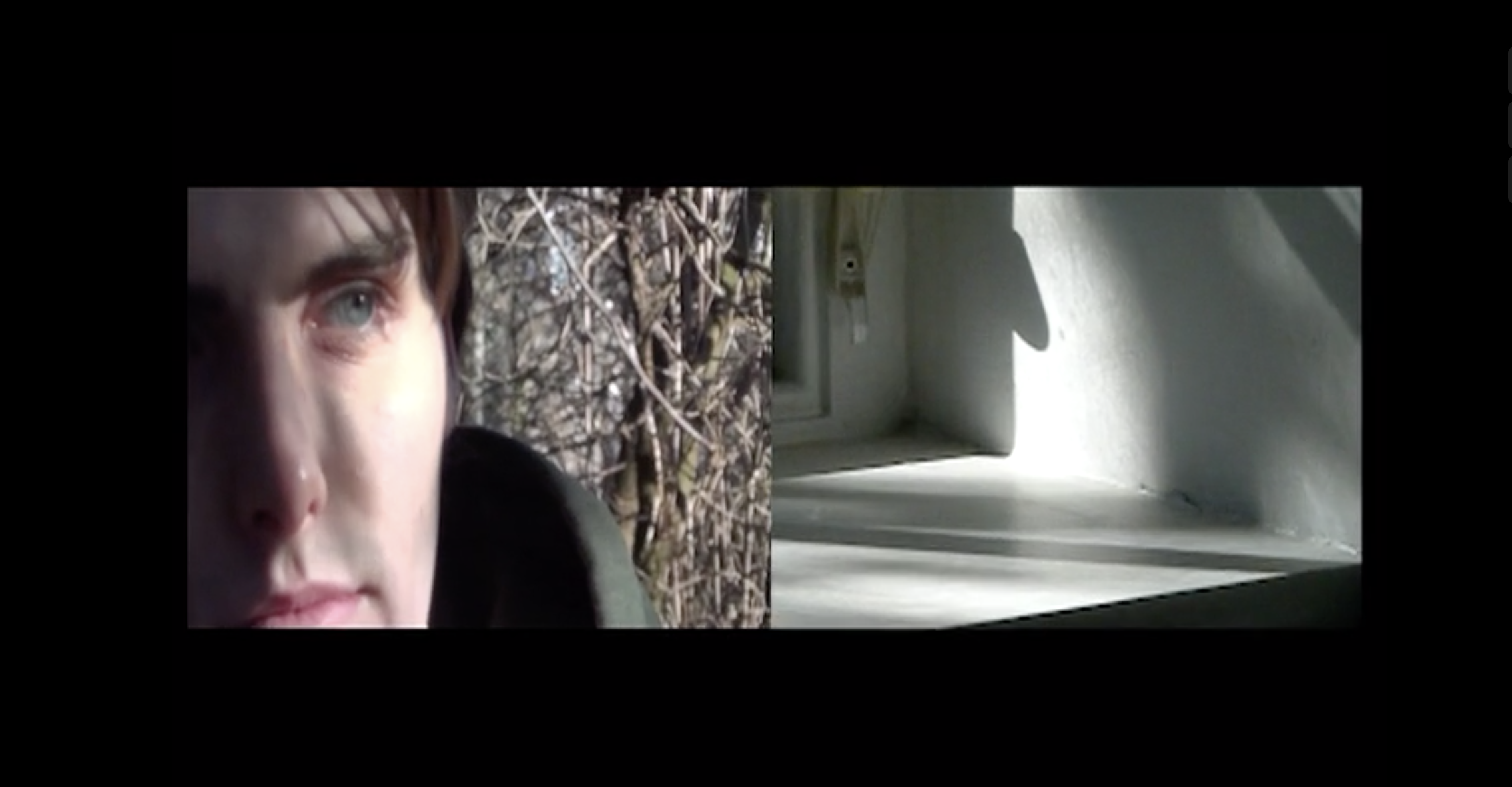
Through splitting the screens the organic laws of perception are broken, although there are techniques I use to try and mimic the eye such as not using a tripod to create natural movement, and zooming into sections to mimic my intuitive way of looking, leaning in due to personal interest.
I must discuss the fact that the camera cannot replicate how the eye sees, but this is not what I am trying to achieve. I’m trying to create a situation, a feeling that I have felt in that place while recording and translating this to myself and the viewer. I use these techniques to create movement, this way of capturing movement instead of a still image is to create space for the moments felt within the time of viewing, awareness of presentness and stillness, moments of recognition and moments of peacefulness.
To challenge thoughts and feelings, having two screens beside each other is a way of seeing purely creating a situation for the audience to have a moment where they have to choose between the two, as the eye cannot truly look at both at the same time. Two screens have the ability to create interconnections, parallel patterns of flow and movement between them. I decided to have the LHS as one moving image.
Dalziel and Scullion use twin screening in their piece Earthdom (2005). The piece is about liquid topography and its influence on biological life. There is a connection between the screens within the movement which express the theme of liquid movement and how water is within us and our ecosystem everywhere and all around. Expressing our connection to the land as we draw connections between the screens. The twin screens help draw these connections through the sequential montages created and viewed beside each other. Complex connections are drawn to understand the film on a deeper level. An idea I want in my own practice, that images and sounds can be seen in many different ways but within the simultaneous slowness, brings the same feeling which is therefore proved through placing them side by side. That there are many artefacts in our world, that this sense of familiarity, stillness can be drawn from. Connections can be drawn in something such as the movement of the water that can bring a certain feeling, a realisation of our connection to the earth can be experienced in the many layers, water is symbolised in the visuals, movement and sounds within Earthdom. The split-screen encourages the audience to think in this way.

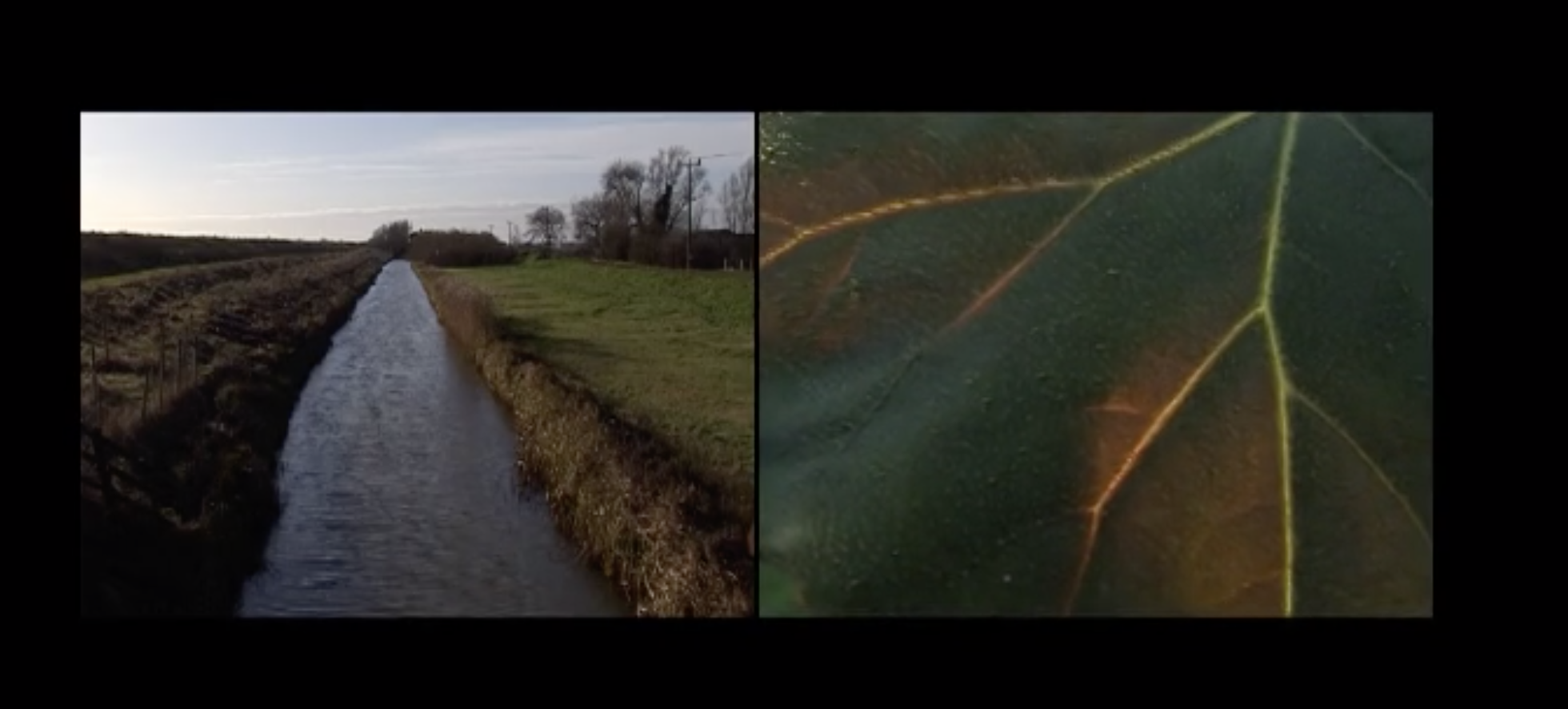 In one section of the piece, they pan across the leaf, I was interested in the fact movement can be shown not only in the world around us but with the influence of the camera too.
In one section of the piece, they pan across the leaf, I was interested in the fact movement can be shown not only in the world around us but with the influence of the camera too.
I explore how things can be repeated but never completely the same way. For example, the images mostly include plants, walls, windows, water, a similar slow movement, similar distant audios etc. In order to trigger a feeling that maybe has been felt before.

Within these images below, Through movement and association I on purpose bob side by side and then play an image of water afterwards, therefore the audience will connect and draw parallels between seeing the water into the scenes, much like how Dalziel and Scullion use movement in their piece to represent associations with liquid and movement. A technique used in P.O.V shots from Van Gogh’s perspective in At Eternity’s Gate (2016) that i was inspired by.
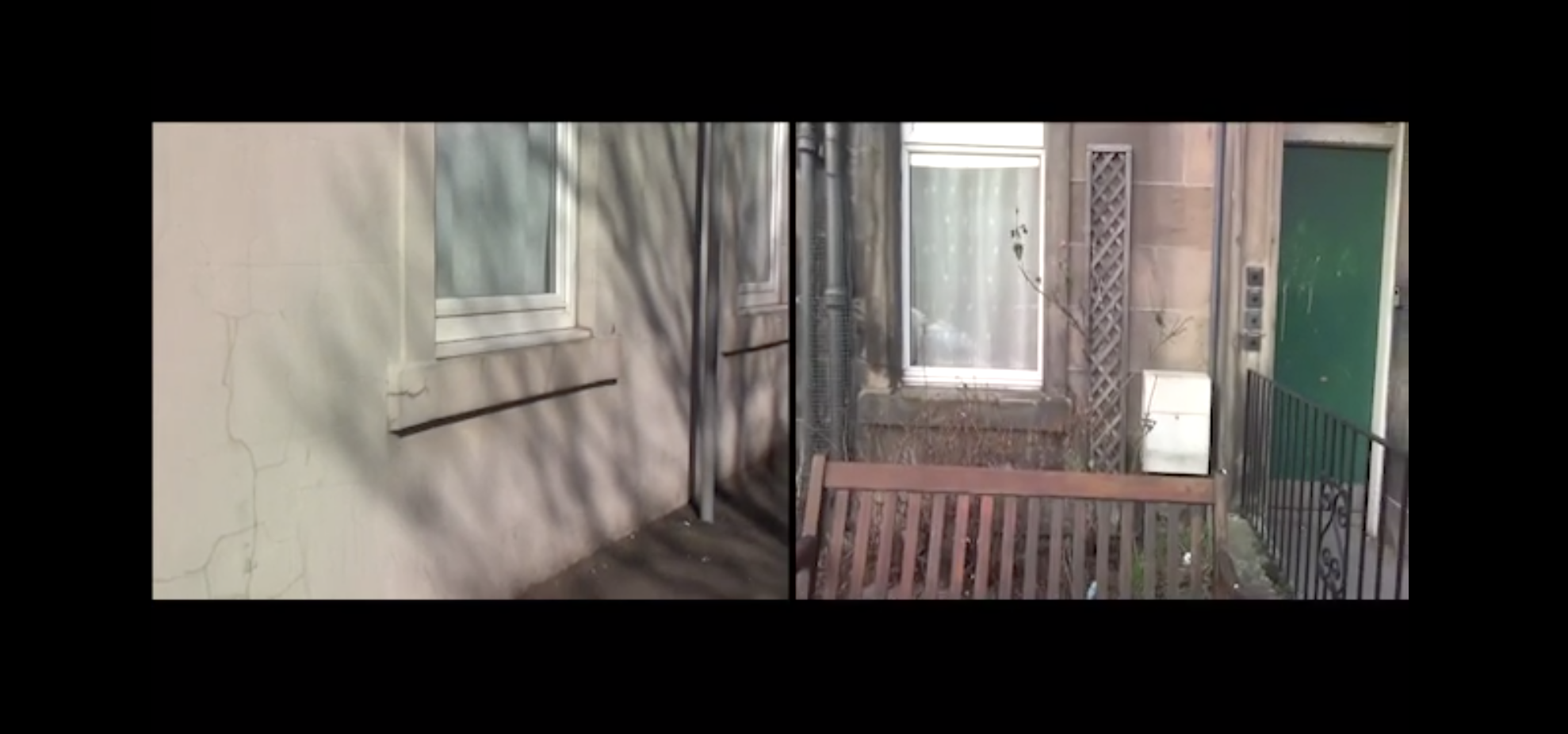 (bopping)
(bopping)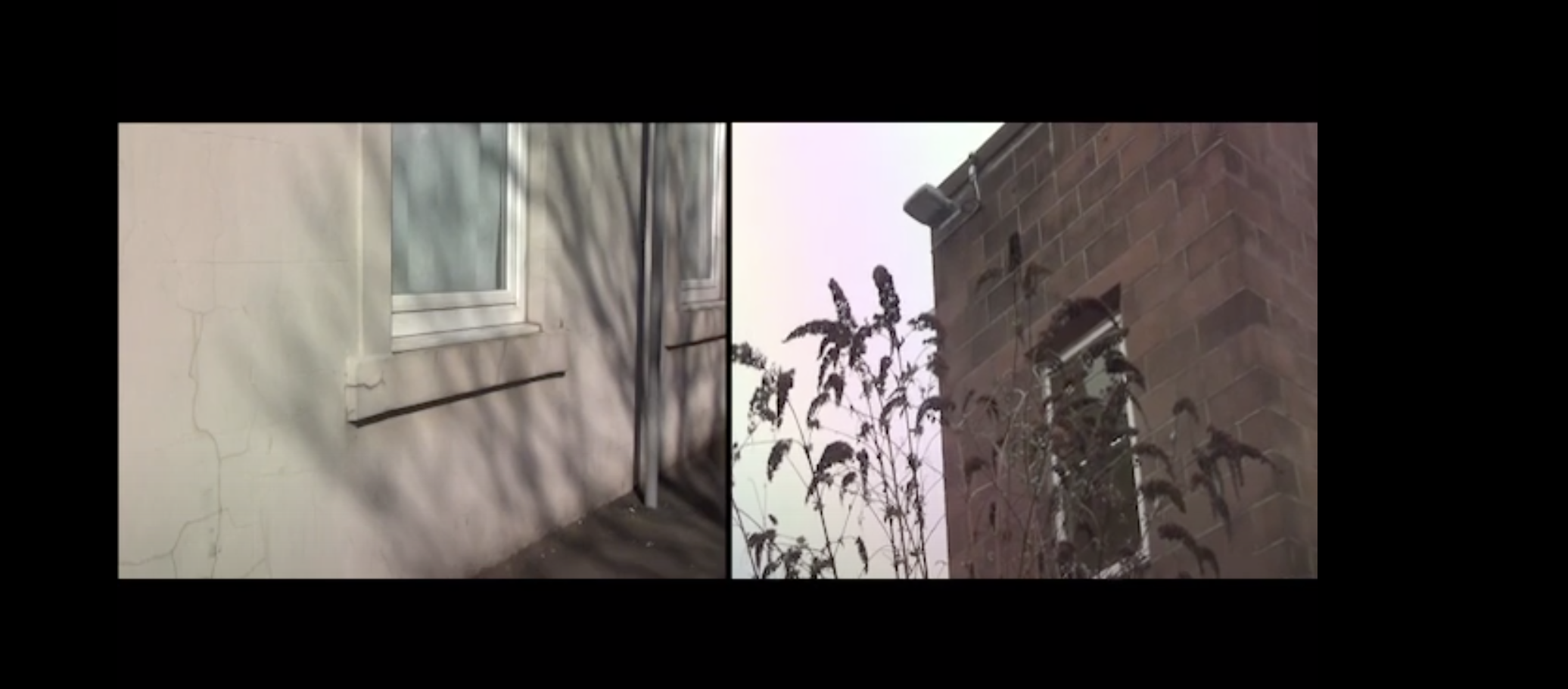
(bobbing)
(water movement after bobbing)
Audio: Witnessing the Screening of Lyndsay Mann’s work A Desire For Organic Order (2016) and becoming aware of the sounds within the piece. Mann’s work makes me feel present which I value and wanted in my own piece, therefore making me consider including audio to make my work more immersive and engaging.
Mann had not synced up the audio with the visuals, how the piece was quiet so that to listen you would need to concentrate, how she heightened the volume of background noises, therefore, making me feel more present within her piece but how also when viewing her work I felt the sounds and white noise of the room it was shown in interacted with her work due to her attention to these aspects. And how people walking around the gallery, children playing outside could be heard while seeing her film but instead of being distracting it enriched the viewing experience. As I was so encapsulated with the sound in her work I organized an interview with the artist herself, and this was key to the realisation of the audio within my work, as she discussed her interest in authority and objective/subjective speech, and the fact the room interacted with her piece and her attention to background noise to make the viewer more present and to cling onto the words she discusses which could be said to be subjective due to its science-based content. I found myself getting distracted by the footsteps of the other gallery visitors, due to her work being quiet I asked her if this was intentional. She is interested in not listening or engaging in everything interested in authority what makes something objective what makes something subjective, and the fact that when a scientist is to speak about something it is taken as subjective to when an artist speaks about something it is objective.
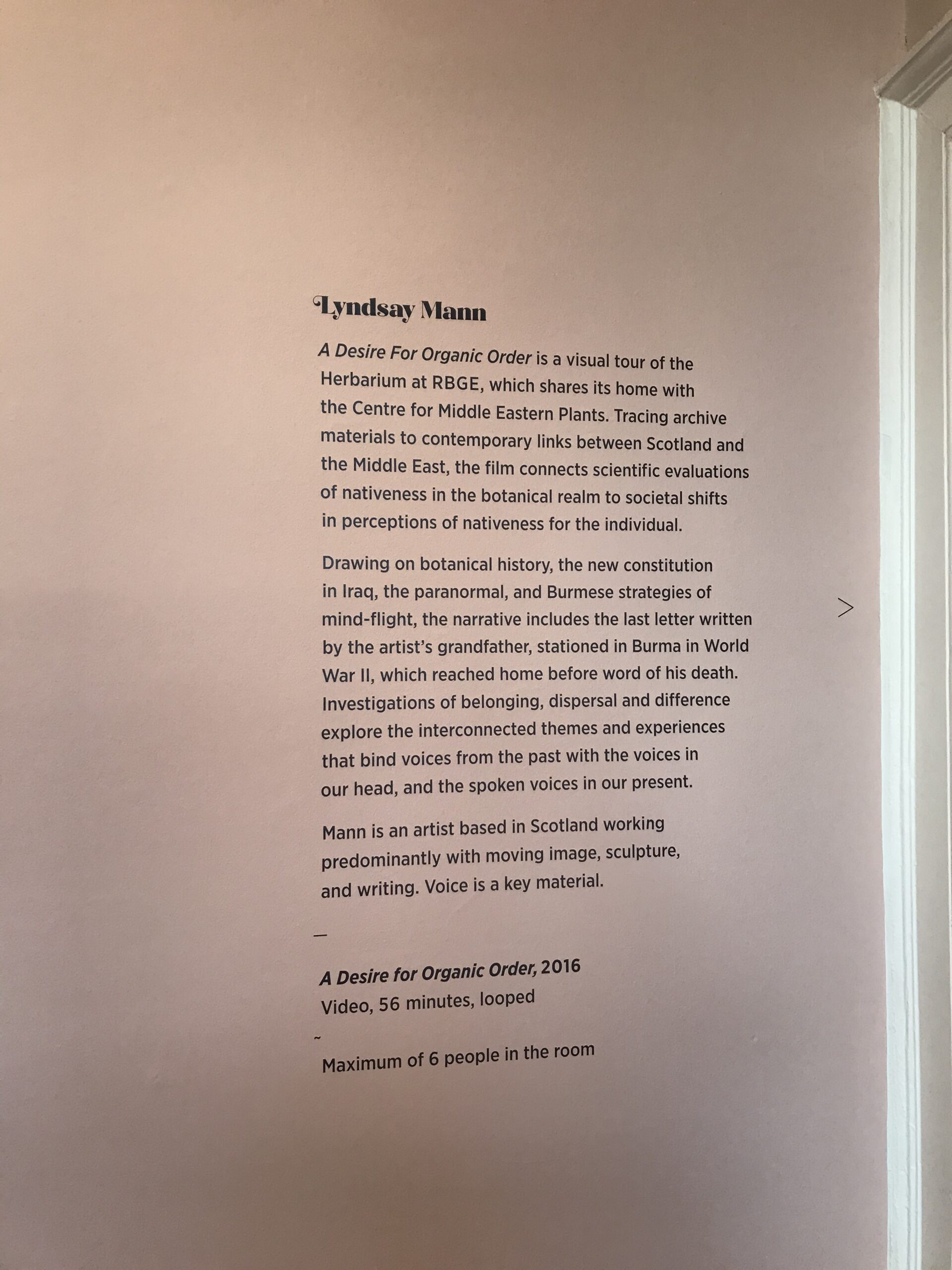
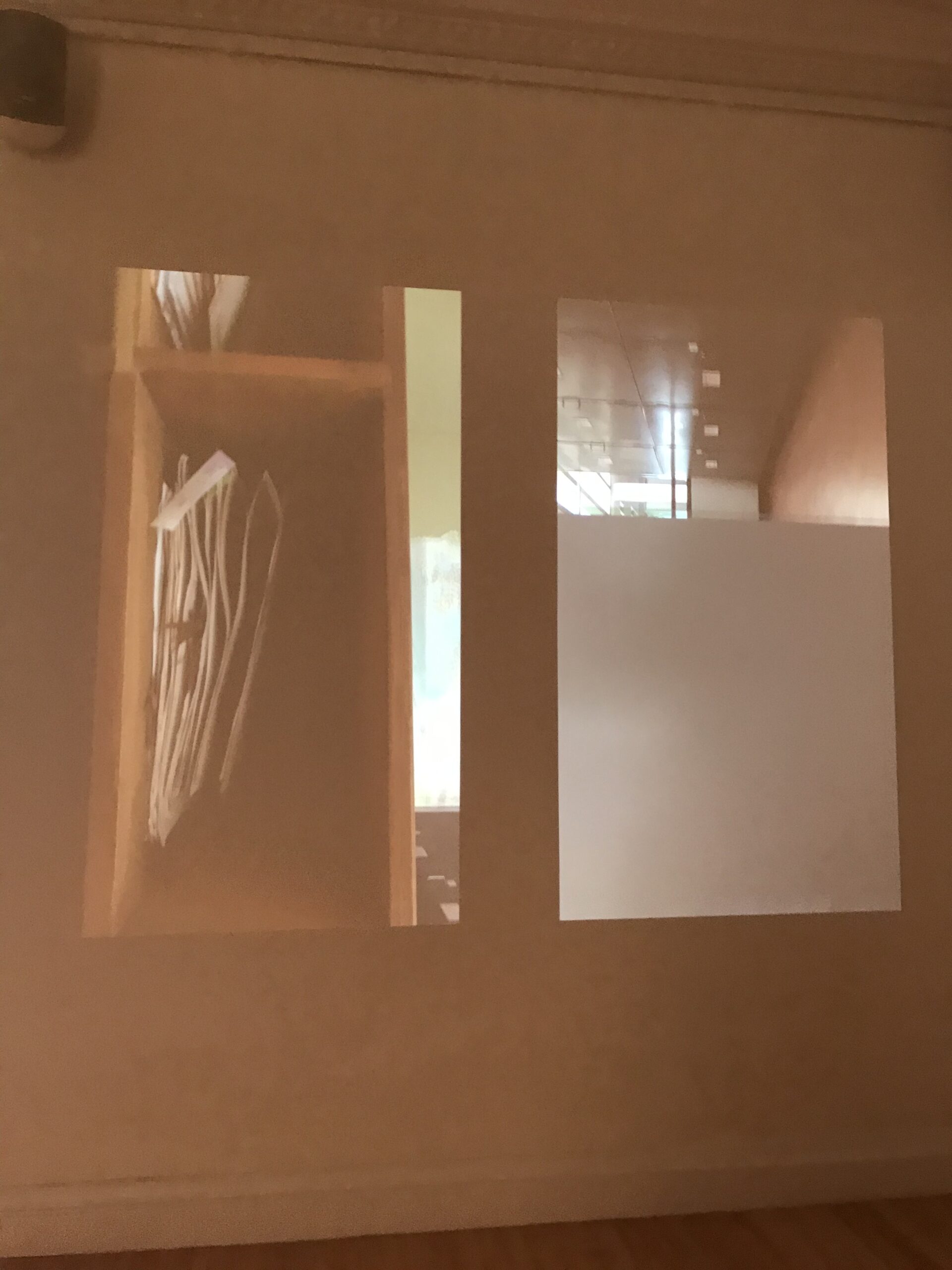
My audio contains layers and sounds coming and going, and out of sync with the image. I Adjust the volume of the audio, aspects such as water moving and birds chirping are heightened over other audio to make the viewer think more about little aspects within everyday sounds that go unnoticed and fade into white noise. Choosing to make the audio not synced up with the visuals, this way exploring the idea of seeing/hearing one thing but being somewhere else in your head, to be transported somewhere else and lost in thought triggered by a certain sound/visual.
Associations and connections can be drawn through images, twin-screen, sounds, movement and sequential order of my piece. For example, To be viewing something unassociated with water like a street view that using handheld camera technique of bobbing like water with the water audio makes us think of water, transporting the viewer somewhere different to what they see.
Choosing to louden white noise, background noise, intensify the sounds creates awareness of the background noise, and how this awareness makes us feel. How we can be reminded of the feeling of being present. Through sound and image.
Images can make us present, the reason I chose to do the combination of sound and moving image as it is capable of reminding us of the feeling of being present. The passing cars in the distance that I chose to use as sound within my piece, a sound that is recognisable especially to those who live in a city. Hoping that the audience hears this it will remind them of the sounds of passing cars in a previously lived moment of their own, as bringing forward the background noise not usually aware of especially the sounds of passing cars in a film that is not primarily about traffic can remind us of this feeling of being present. Which links to ideas explored by Marcel Proust.
Slowness showed in more ways than one simultaneously. Slowness build tension, to stay with one shot for a long time. Places that make me feel present and calm shown in more way than one simultaneously. Twin screens let me do this.
Panning is a technique I had to practice in order to express slowness and getting familiar with a place. I first came across this effective technique in Rosy Martins Video piece Too Close to Home https://vimeo.com/98644806(1999), uses the technique in a room with her mother, this way she is able to grasp onto the moment and remember the feeling of being in a present with her mother before she passed. I would practice panning the camera around my bedroom in order to become comfortable with the process. https://youtu.be/5ITNOnO8RAQ(Linked here) In this process I began to notice more and more details within my bedrooms I hadn’t noticed before, like spilt soil and the view of a neighbours window. I began to appreciate the way the light hit against the fabric of my curtain.

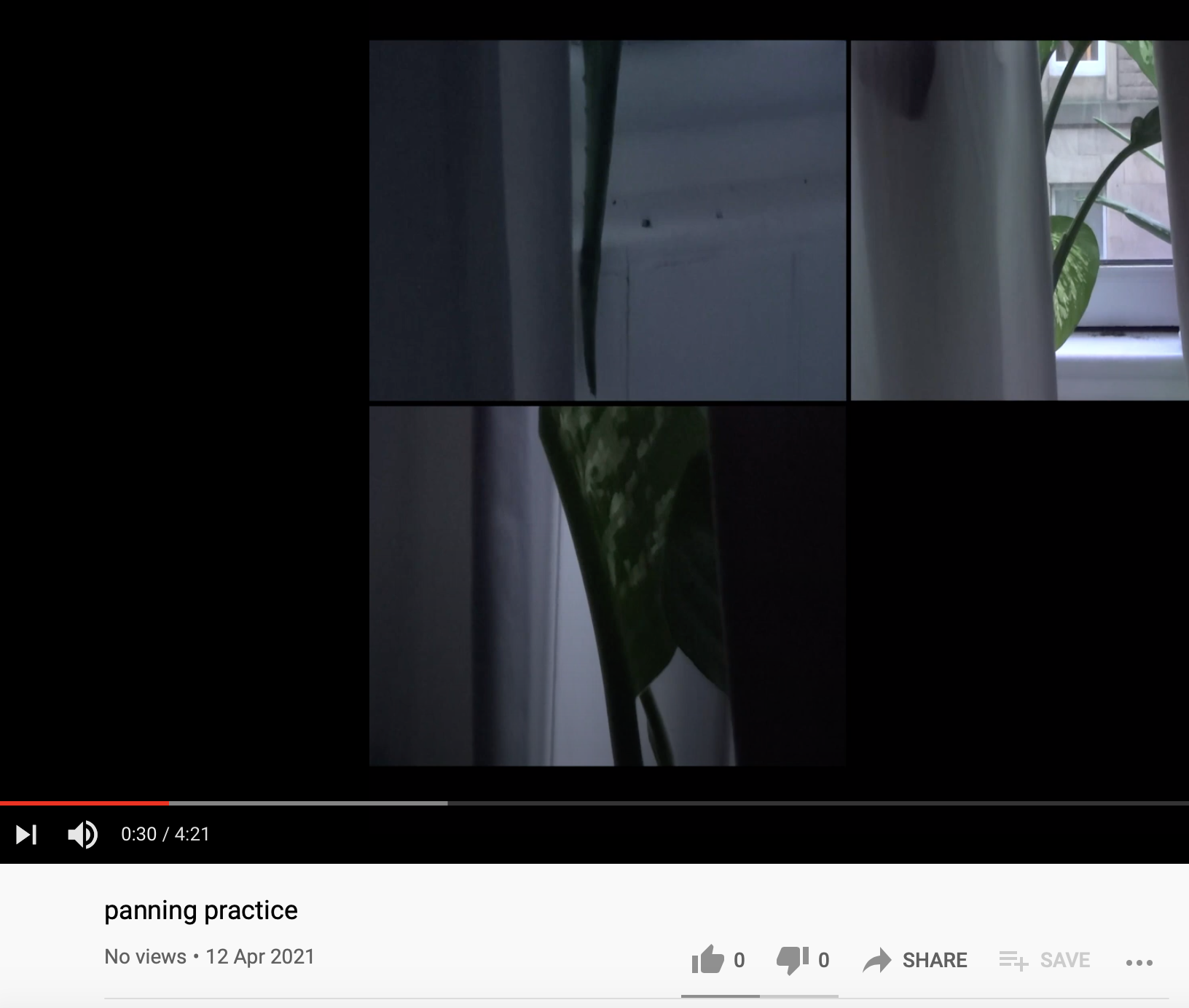
A quick tip from a filmmaker – Mann gave me tips during our meeting for panning with handheld slowly and stopping jolts and disruption. She told me that you identify where you tend to mess up the pan, and start from that point going backwards – so that during editing, you can play the video backwards and therefore the whole pan is smooth using handheld motion without disruption/distraction the way you wanted it to be shown.
Slowing down my videos, altering this way, I am able to create a feeling of stillness and peacefulness that can’t be expressed through real-time. A surreal experience moving image is able to provide. To enhance lived experience.
Moving image vs Photography. Photography can provide an image that is seductive that makes us feel present within viewing, using moving image and sound I am able to create a feeling during the time it is viewed, instead of being present it also can provide a way of remembering what it feels like to be present., which are two different things that can be felt simultaneously – linking to my use of twin screens.
Showing time through movement, over the course of a ‘day’, each day is different but can be shown and expressed in the same way, as I have recorded the RHS of my twin-screen over 8 months. The LHS is one moment.
Research into poetic cinema helped in developing my practice further. Poetic cinema was originated by the great Russian filmmaker Andrei Tarkovsky. I have also been influenced by slow cinema. An aspect Tarkvosky also uses. He discusses this in Sculpting in Time (1989).
“You also have to be able to trust solutions which present themselves spontaneously… This, however, is not something to be gauged by deliberations about what devices to ban or allow in your film, but through experience gained by looking at the excesses that found their way into your early productions and which have to be eliminated naturally as your work proceeds” – Tarkovsky, A. and Hunter-Blair, K., 1989. Sculpting in time: reflections on the cinema. University of texas Press.
“The “Poetic cinema” time cannot disappear without leaving a trace because it belongs to a subjective and spiritual category. The experienced time of the film is a live one. With all the effects and affections it settles in our soul as an inhabited time experience.” – Judith Sacal, “Being and Cinema: beyond Time in Poetic Cinema”, Rivista di estetica, 46 | 2011, 151-154.
Tarkovsky discusses cinema as ‘sculpting in time’, he uses long shots in a cinematic form that makes them seem longer in comparison to how the cinema has developed socially to entertain viewers. Time is slowed in his films.
Through moving image, I am capturing, and through movement and sound expressing, my own intuitive connections with the world, and checking in with myself being an important aspect of my practice – to make sure that the content I am creating still makes me feel present, still and peaceful so then the audience too can feel this.
Last tweaks on Rest Assured, Time is Passing:
‘rest assured’ links more. Having one almost, but not quite a stagnant image next to more obviously moving images makes the piece more grounded, familiar with more security.
I experimented with the direction the images faced and found the piece work better when they moved from right to left, but not being too restrictive so there are images moving from the left to right but still facing/point in the direction of the left – this created more connection.
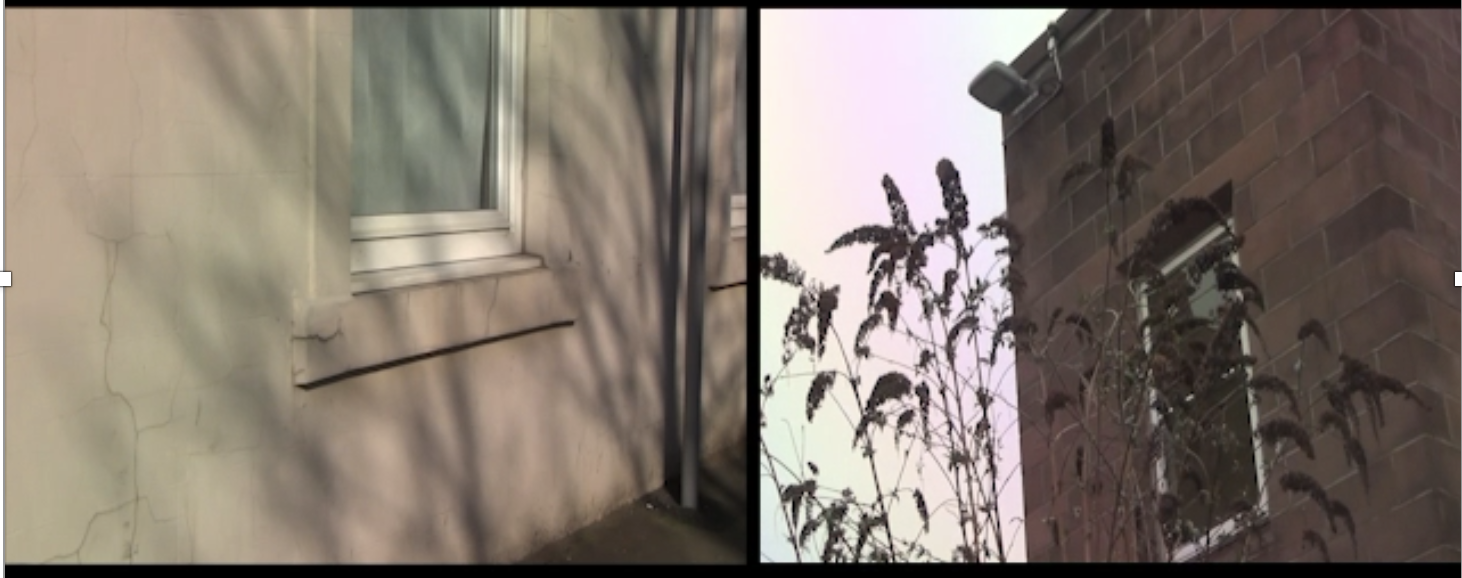 Facing towards the left, more successful this way than facing away from the LHS image.
Facing towards the left, more successful this way than facing away from the LHS image.
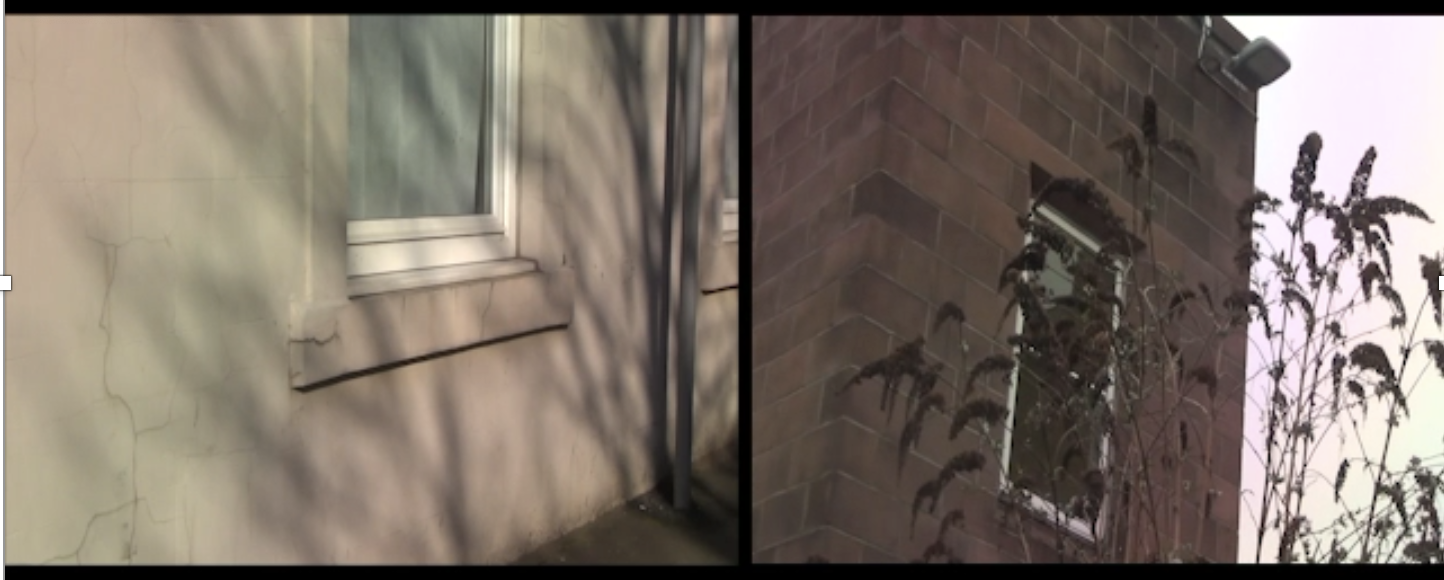
Deciding against the tripod. I experimented with using a tripod for the LHS of my piece but due to the movement and fleeting images to the RHS, I found myself not watching the LHS at all. I decided to refilm it using the handheld but not panning and staying still as handheld can. The very subtle movement of my hands had given the piece a better outcome and had more of an impact therefore the LHS offered a grounding element to the piece but enough movement from the shadow of the trees, the reflection of cars passing in the window and the slow natural movement my hands offered.
I had the freedom to be able to move up and down and back on myself intuitively and create the sweep I wanted once I had practised handheld slow panning. I felt restricted using a tripod as I had less freedom and was only able to pan in one straight line therefore was unable to slowly pan and explore space. It also didn’t mimic how I saw a place or came close to how an eye would scan a place, in which the movement of handheld did more.
Here is a comparison of using a tripod against handheld compared to panning. I felt the panning on the LHS created too much movement and therefore too distracting that it is hard to keep up and therefore challenging the viewer too much. Having movement although maybe not notice it is still there, still subtle and effective and grounding as the piece is about the movement of time, a still image on a tripod might not be as effective
Tripod Still: https://youtu.be/aa2pYJsvV9k
Hand-held Panning: https://youtu.be/SYxCtY8BIvk
Hand-held still: https://youtu.be/2T7MxCqa4qM
Deciding against zooms. Too distracting, too quick movement, amateurish, after discovering slow cinema I began to change the way I filmed/edited and the outcome was more suited to the feeling of the piece.
Deciding to have one constant video with one fleeting. If I was going to do twin screens, I wanted them to show this idea of the same thing getting shown in a different way, just as I show images that are similar but shown in a different way but giving the same feeling. in this aspect putting fleeting videos over time next to one present moment gives the audience time documented in two ways but creating the same feeling.
Deciding to move constant video to LHS, as we read from left to right. We are therefore more likely to view the left first, being the constant clip.
